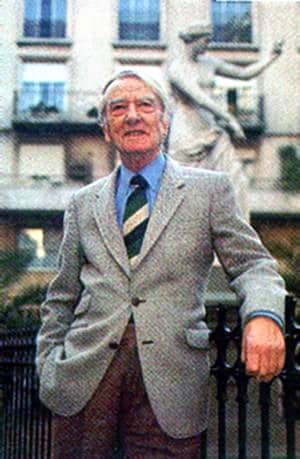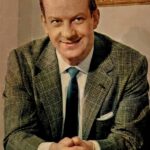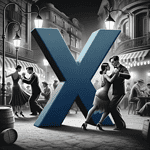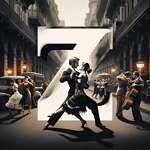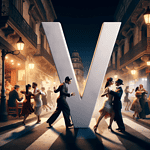Enrique Cadícamo stands as one of the most prolific and influential lyricists in tango music history. Through his evocative lyrics and collaborations with renowned tango composers, Cadícamo left an indelible mark on the evolution of the genre. His body of work continues to captivate global audiences and inspire contemporary tango artists today.
Introduction
Enrique Cadícamo was an acclaimed Argentine tango lyricist, poet, composer, and writer. Born in the Buenos Aires suburb of Avellaneda in 1900, Cadícamo contributed over 200 memorable tango compositions over the course of his decades-long career.
With his sophisticated yet accessible lyrical style rich in lunfardo slang, Cadícamo became a driving force behind tango’s transition from instrumental music to the lyrical art form beloved worldwide today. His work with legends like Carlos Gardel and Juan D’Arienzo shaped the golden age of tango and established Cadícamo as one of the genre’s most important creative voices.
Early Life and Influences
From an early age, Cadícamo displayed a natural flair for language and poetry. As a young man in 1920s Buenos Aires, he fell in love with tango music and became a devoted habitué of tango salons. Cadícamo soaked up the cadences and vernacular of the tango subculture, developing a distinctive, lunfardo-infused lyrical style.
Early literary influences like Evaristo Carriego inspired Cadícamo to portray the passion and heartache of everyday life in his lyrics. These experiences fueled his emergence as a talented tango composer and lyricist with a keen ear for the language of the streets.
Career Milestones
Cadícamo’s prolific career took off in the 1920s when his first tango lyrics were published by renowned editor José Maria Aguilar. He soon began collaborating with popular composers like Juan Carlos Cobian and Rodolfo Sciamarella.
One of his first major successes came in 1934 with the tango “Nostalgias,” composed by Juan Carlos Cobian and recorded by Ignacio Corsini with Francisco Canaro’s orchestra. The evocative lyrics about missing one’s homeland resonated strongly with listeners.
However, Cadícamo’s career hit new heights when he began working with tango star Carlos Gardel in the 1930s. Together they created such classics as “Mañana Iré Temprano,” “Nieblita” and “Lejana Tierra Mía,” showcasing Cadícamo’s nostalgic, poetic lyrics.
Notable Works
Cadícamo’s compositions remain staples in tango dance events worldwide. Here are 10 of his most popular and enduring tangos:
- “Madreselva” (1938) – Sentimental ode to lost love, recorded by Alberto Marino with Francisco Canaro’s orchestra. A melancholy crowd-pleaser.
- “Uno” (1943) – Uptempo number declaring “you are the one,” performed by Alberto Castillo with Alfredo De Angelis’ orchestra. Renowned for its rhythmic instrumental breaks.
- “Al Compás del Corazón” (1942) – Lyrics rich in wordplay, recorded by Alberto Podestá with Juan D’Arienzo’s orchestra. Dancers love its driving rhythms.
- “No Te Apures, Carablanca” (1939) – Humorous take on romantic jealousy, sung by Ernesto Fama with Carlos Di Sarli’s orchestra. Audiences adore its playful lyrics.
- “Griseta” (1944) – Evocation of a young working class girl, performed by Alberto Podestá with Troilo’s orchestra. A favorite for its poetic imagery.
- “Noche de Estrellas” (1934) – Stirring ode to finding love on a starry night, recorded by Charlo with Francisco Canaro’s orchestra. Renowned for its romanticism.
- “Fuimos” (1938) – Bittersweet lyrics of lost love, performed by Roberto Maida with Juan D’Arienzo’s orchestra. Dancers revere it as a melancholy classic.
- “Sollozos” (1923) – One of Cadícamo’s first major successes, recorded by Osvaldo Fresedo’s orchestra. Still enthralls with its lush violin passages.
- “Farol” (1930) – Brooding tale of lost love, with Roberto Maida singing with Francisco Lomuto’s orchestra. A timeless dramatic tour de force.
- “Nostalgias” (1934) – Evocative ode to longing for one’s homeland, recorded by Ignacio Corsini with Francisco Canaro’s orchestra. Remains a poignant anthem.
Influence on Tango
Cadícamo’s legacy is his indelible influence on tango’s evolution from instrumental music to a lyrical art form. His sophisticated poetry gave voice to the genre’s themes of passion, heartbreak, jealousy and nostalgia. In doing so, he expanded tango’s emotional range and resonated deeply with global audiences.
His unique lyrical flair and conversational style modernized tango, while preserving its roots in the working-class immigrant experience. Cadícamo’s body of work enriched the genre’s artistic substance and helped cement its worldwide appeal.
Enrique Cadícamo, a prominent figure in the world of Argentine tango, left an indelible mark on the genre with his poetic lyrics and evocative storytelling. As a renowned tango lyricist, Cadícamo’s words captured the essence of Buenos Aires and the passion that defines tango. His contribution to the development and preservation of tango as a cultural heritage is immeasurable, making him one of the most celebrated figures in the history of Argentine music.
Born on July 15, 1900, in the city of Luján, Argentina, Cadícamo grew up in a musical family, which influenced his early exposure to the arts. His love for tango blossomed during his teenage years when he started frequenting the neighborhood dance halls, known as milongas, where tango was the heartbeat of the city. Inspired by the music and the emotions it conveyed, Cadícamo began to delve into the world of tango lyrics, paving the way for his future success.
Cadícamo’s lyrics were characterized by their deeply poetic and narrative qualities, often telling stories of love, heartbreak, and the struggles of everyday life. His words had an innate ability to transport listeners to the gritty streets of Buenos Aires, immersing them in the raw emotions and vibrant energy of tango. Through his vivid imagery and nuanced storytelling, Cadícamo captured the essence of the tango culture and its connection to the social fabric of Argentina.
One of Cadícamo’s most famous compositions is “Los Mareados” (“The Bewildered”), which he wrote in collaboration with composer Juan Carlos Cobián. This tango is considered a masterpiece and a reflection of Cadícamo’s lyrical brilliance. The song tells the story of two lost souls entangled in a turbulent love affair, portraying the universal themes of passion, longing, and disillusionment. “Los Mareados” has since become an iconic tango, recorded by numerous artists and cherished by tango enthusiasts worldwide.
In addition to his work as a lyricist, Cadícamo also had a successful career as a singer and actor. His deep, rich voice added another layer of authenticity to his compositions, and his performances brought his lyrics to life. His stage presence and charisma captivated audiences, further cementing his status as a tango icon.
Throughout his life, Cadícamo collaborated with many renowned tango musicians and composers, including Aníbal Troilo, Osvaldo Pugliese, and Ástor Piazzolla. These partnerships resulted in numerous tango classics, solidifying Cadícamo’s reputation as one of the most influential figures in the genre.
Beyond his artistic contributions, Cadícamo played a crucial role in preserving the cultural heritage of tango. He actively promoted the recognition and protection of tango as an integral part of Argentina’s identity. His efforts contributed to tango’s inclusion on UNESCO’s Intangible Cultural Heritage List in 2009, ensuring its continued appreciation and safeguarding for future generations.
Enrique Cadícamo’s legacy lives on, and his impact on tango is still felt today. His ability to capture the emotions and essence of Buenos Aires through his lyrics has left an enduring imprint on the genre. His work continues to inspire new generations of musicians and poets, keeping the spirit of tango alive.
As we celebrate the rich tapestry of Argentine tango, it is impossible to overlook the immense contribution of Enrique Cadícamo. His lyrical masterpieces and unwavering dedication to the genre have made him an immortal figure in the annals of tango history. Through his words, we can still hear the heartbeat of
https://www.todotango.com/english/artists/info/37/Enrique-Cadicamo [2] https://tango.info/EnriqCadic [3] https://www.todotango.com/english/artists/biography/1005/Enrique-Cadicamo/ [4] https://www.theguardian.com/news/1999/dec/24/guardianobituaries3 [5] https://en.wikipedia.org/wiki/Enrique_Cad%C3%ADcamo
